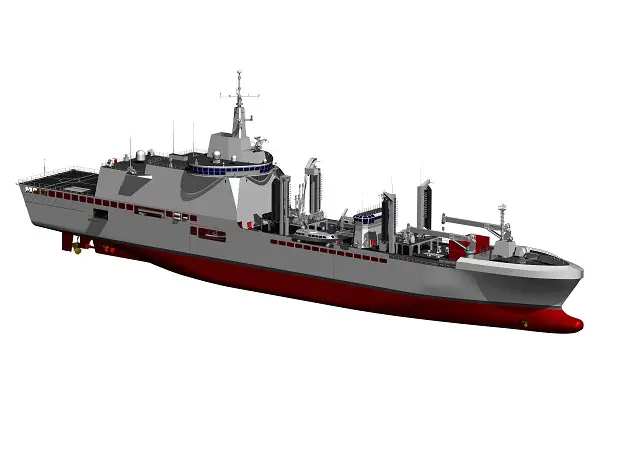Breaking news
Fincantieri Launched Bow Section of Italian Navy Future Logistic Support Ship LSS.
| 2017
|
|
|||
|
Our video coverage on LSS during Euronaval 2016
|
|||
|
|
|||
|
The multi-year program for the renewal of the Italian Navy’s fleet foresees the construction, besides the LSS, of one transport and landing unit (LHD or Landing Helicopter Dock) - this unit, too, to be built in this shipyard with works starting this summer and launching in the summer 2019 - as well as seven Multipurpose Offshore Patrol Ships (PPA), with other three in option.
The fundamental characteristic common to all three classes of ships is their high level of innovation providing them with a considerable degree of efficiency and flexibility in serving different mission profiles. In particular, these are dual use vessels, meaning that they may be used for both standard military purposes and those in favour of the community (as for example for civil protection), and they also have a low environmental impact thanks to a state-of-the-art auxiliary propulsion system generating a low level of pollution emissions (electric engines). The vessel “Vulcano” will be classified by RINA pursuant international conventions about prevention of pollution regarding the more traditional aspects, like the ones of the MARPOL Convention, as well as those not yet mandatory, as the Hong Kong Convention about ship recycling. |
|||
|
|
|||
 Computer rendering of LSS. Image: Fincantieri Computer rendering of LSS. Image: Fincantieri |
|||
|
|
|||
|
Vessel’s characteristics - LSS – Logistic Support Ship
The LSS is a vessel that provides logistics support to the fleet, endowed with hospital and healthcare capabilities thanks to the presence of a fully equipped hospital, complete with operating rooms, radiology and analysis rooms, a dentist’s office and hospital rooms capable of hosting up to 12 seriously injured patients. The ship is capable of combining capacity to transport and transfer to other transport vessels used for liquids (diesel fuel, jet fuel, fresh water) and solids (emergency spare parts, food and ammunitions) and to perform at sea repairs and maintenance work for other vessels. The defense systems are limited to the capacity of command and control in tactical scenarios, communications and dissuasive, non-lethal defense systems. The vessel is also capable of embarking more complex defence systems and becoming an intelligence and electronic war platform. • 165 meters long • speed of 20 knots • 200 persons including crew and specialists • 4 replenishment station abeam and 1 astern • Capacity to supply drinking water to land • Capacity to provide electricity to land with 2500 kw of power • Possibility of embarking up to 8 residential and healthcare modules • Capacity to perform rescues at sea, through recovery and seabed operations (the ship is equipped with an 30 tons offshore stabilized crane stabilized) • base for rescue operations through helicopters and special vessels |
|||



























